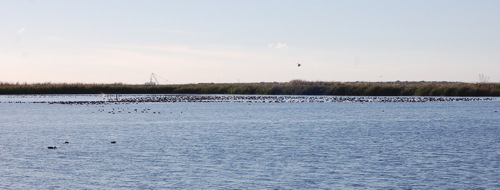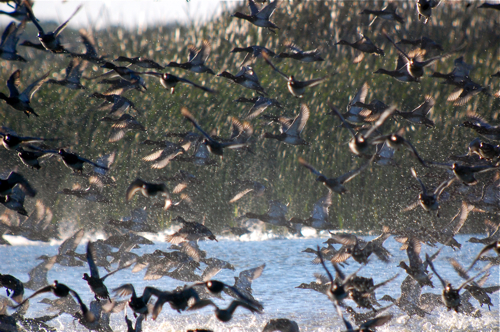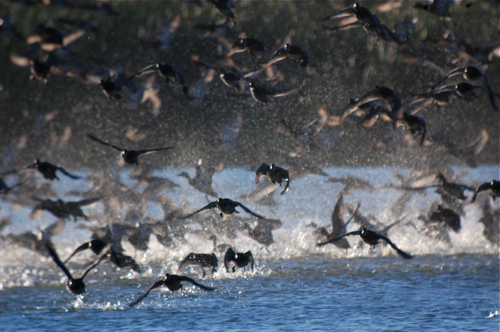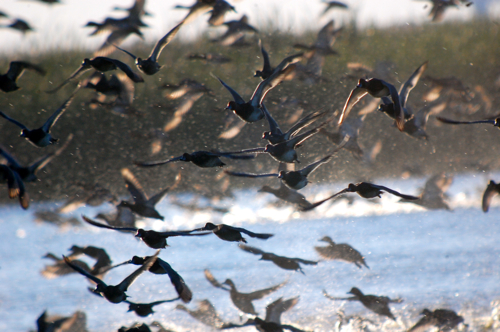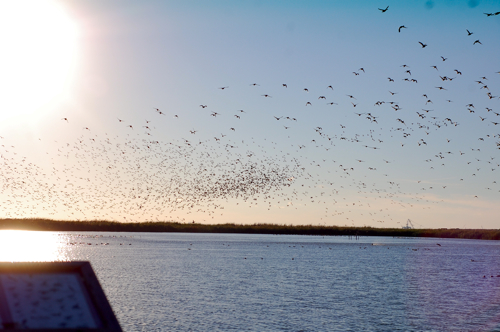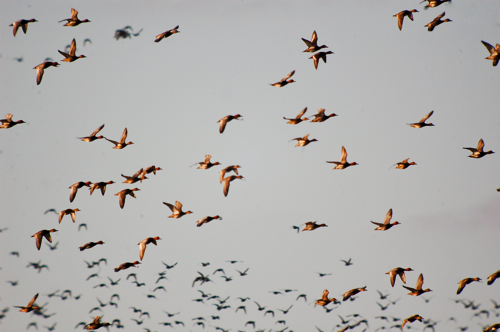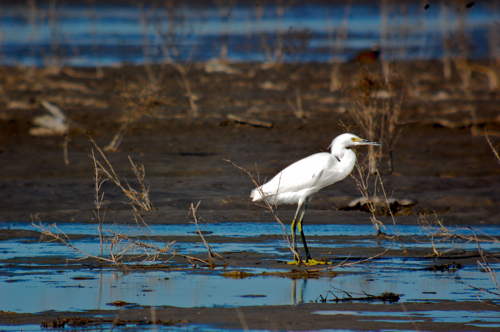So, I was checking out photos of Flat Stanley other people have put in at the Flat Stanley Project and people totally photoshopped him in on some photos. That's cheating. I could have done that with my nephew's Flatty S--he could have been in Israel and birding with me in a minefield but I didn't have him when I went there and that is so not the point of a Flat Stanley.
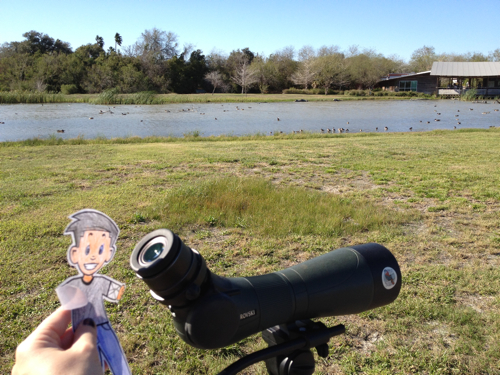
But I did take him to Texas and to the happiest birding place on Earth--Estero Llano Grande. Here I had Flatty S ( I couldn't help but give him a good rap name) looking through my scope.
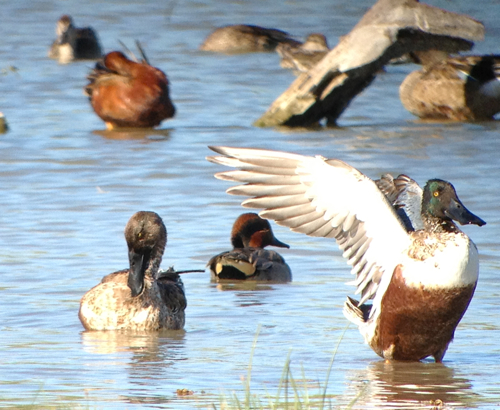
He enjoyed all the different ducks including shovelers, green-winged teal and cinnamon teal. But we weren't the only ones interested in the waterfowl at Estero.
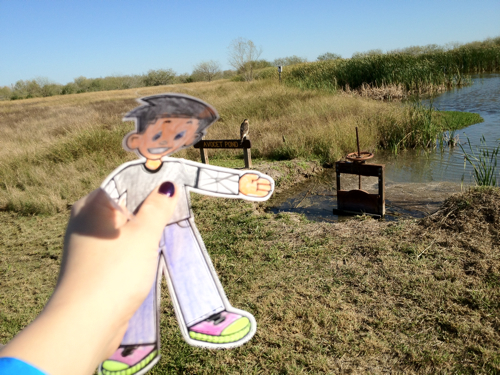
We found a Cooper's hawk very interested in the ducks--see Flat Stanley is pointing to it. This was one relaxed hawk, I can't believe how close it was to the trail and that it let us walk past without getting spooked. I tried digiscoping it with my phone.
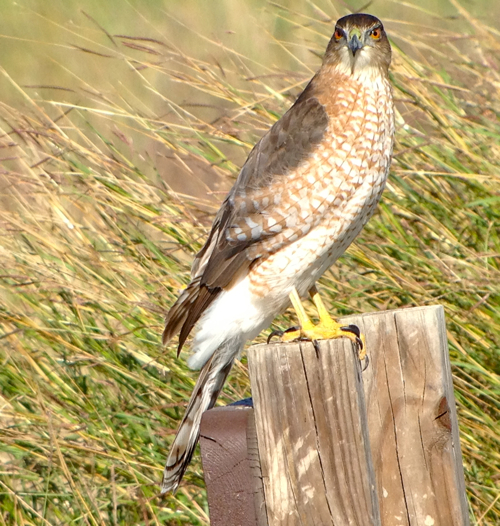
The Cooper's hawk looked and Flat Stanley as though it was thinking, "Can I eat that?" But the hawk did not eat Flatty S. It stuck around for quite some time, even others walked past without phasing the bird.
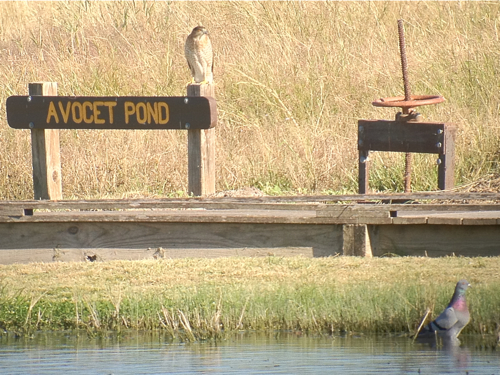
The hawk sat there for so long even a pigeon flew into bathe...then suddenly had that awkward moment when you realize that a predator has joined you in the bath.
These were awesome birds but I wanted to show Flat Stanley a real Texas specialty, something he couldn't see anywhere else so we went to look for for the common pauraque.
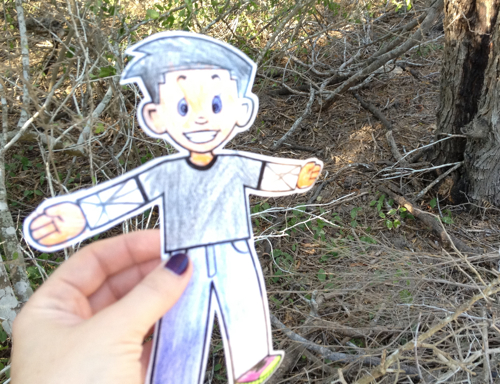
Here my buddy Flatty S is pointing the mysterious nightjar the common pauraque. Can you make it out at the trunk of the tree? No worries, I took a photo with my iPhone through my scope:
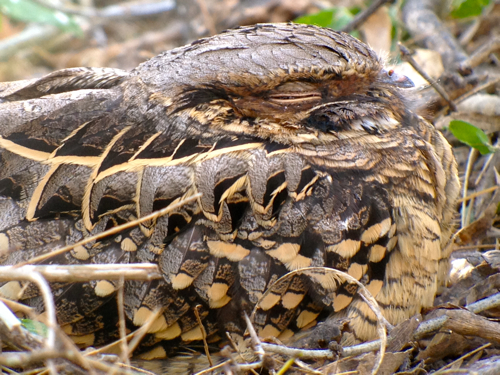
Here's the hiding pauraque up close. I had to chuckle, as I was taking photos with Flat Stanley on of Estero's volunteers said, "I have to ask...what's with the little guy?" I explained Flat Stanley and what I was doing, then he gave me a hard look..."You're not going to put it up against the pauraques are you?"
Feeling a little sassy I said, "I'm not THAT stupid." I know he meant well and he had no idea what kind of birder I was. The pauraques were close to the path and though their defense is to stay still and hidden, some people would take advantage of that and might try to get closer than they should.
So, I've sent Flatty S back home. Wonder if my nephew will catch the birding bug?

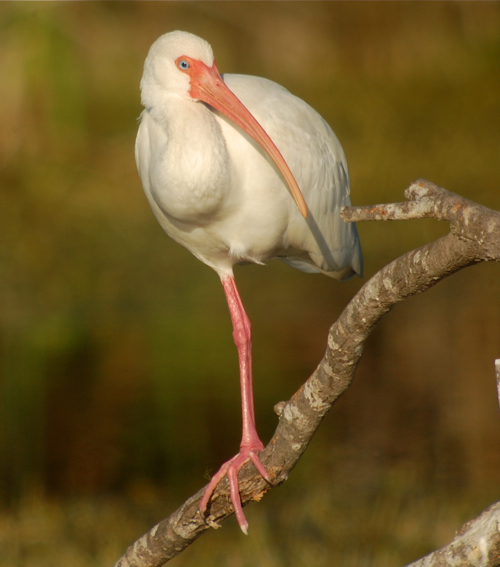
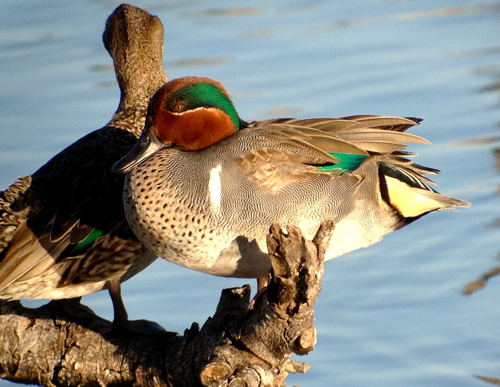
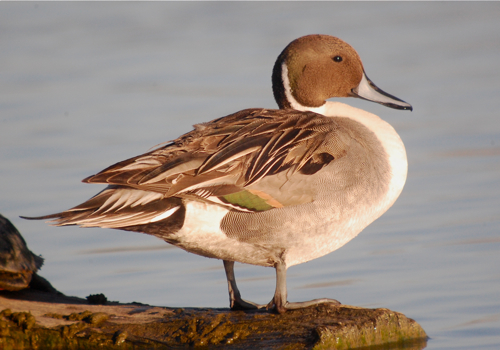
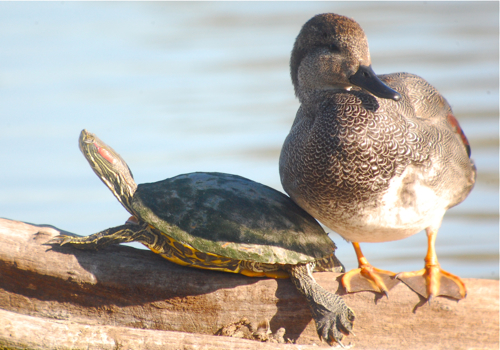
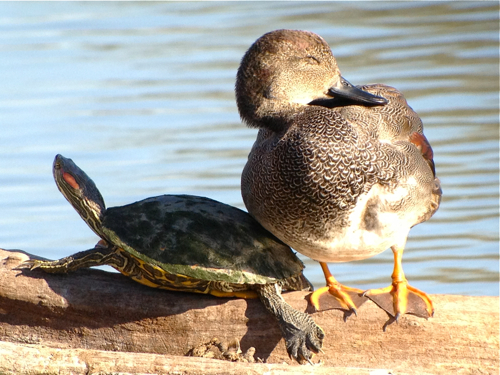
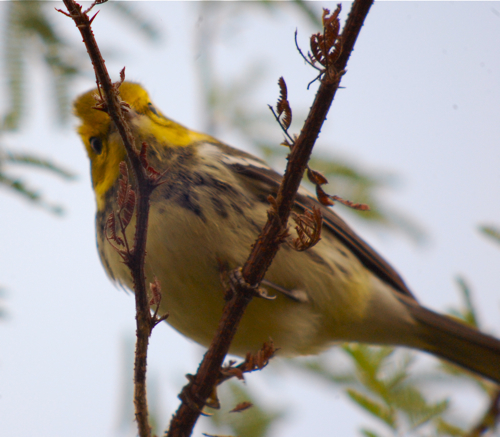 Black-throated green warbler says, "Haha, you can't see me!"
Black-throated green warbler says, "Haha, you can't see me!"



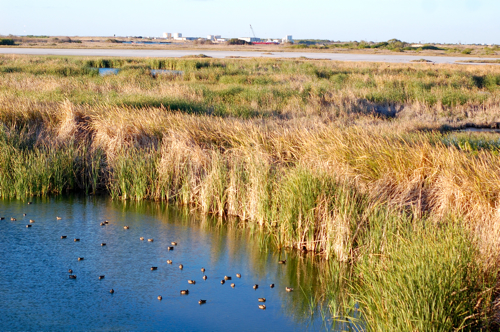
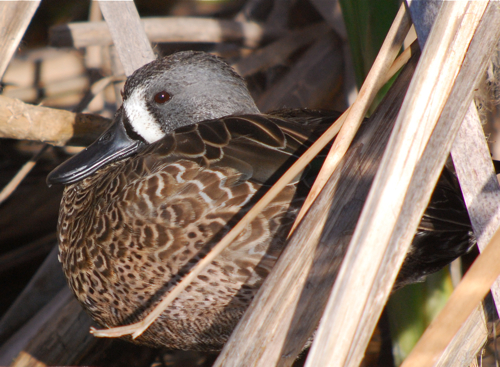
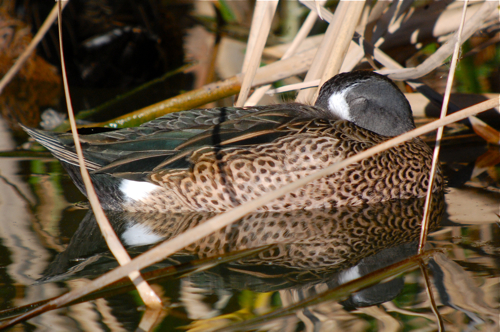
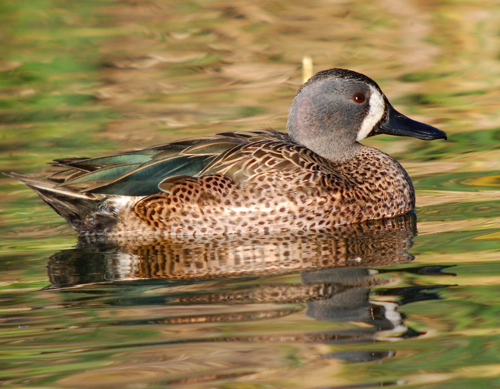
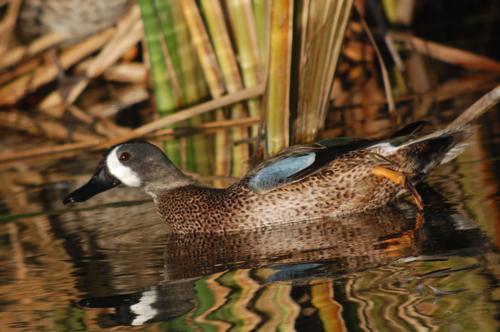
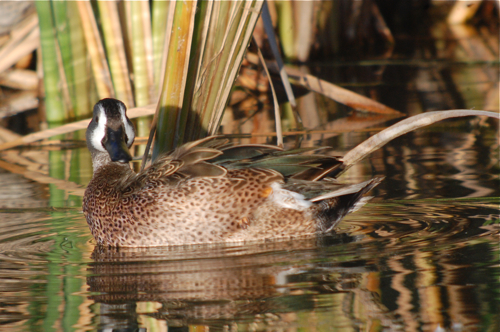
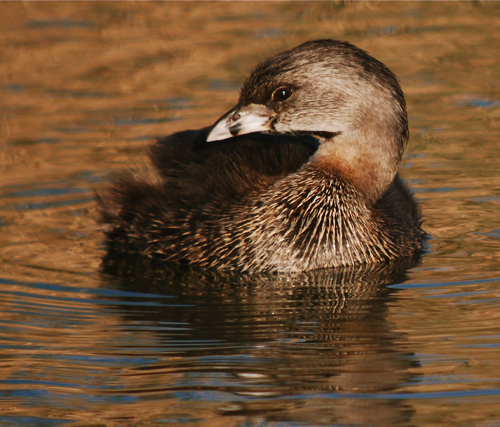 One thing I love about visiting southern states is that some of the birds I see in Minnesota are so much more camera friendly. Pied-billed grebes are shifty in Minnesota, they don't trust anyone staring at them for too long or they submerge and resurface further away. While in Corpus Christi, my buddy Clay took me to a place with a ton of great waterfowl and some rather obliging grebes. The above bird is an adult pied-billed grebe.
One thing I love about visiting southern states is that some of the birds I see in Minnesota are so much more camera friendly. Pied-billed grebes are shifty in Minnesota, they don't trust anyone staring at them for too long or they submerge and resurface further away. While in Corpus Christi, my buddy Clay took me to a place with a ton of great waterfowl and some rather obliging grebes. The above bird is an adult pied-billed grebe.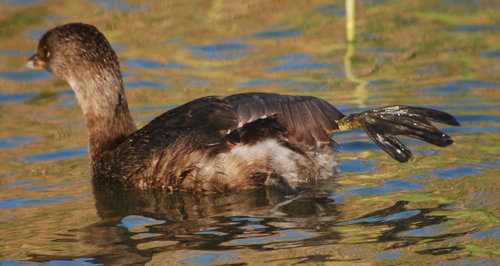
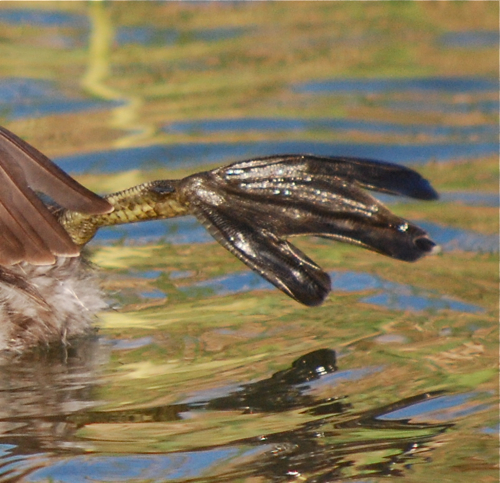
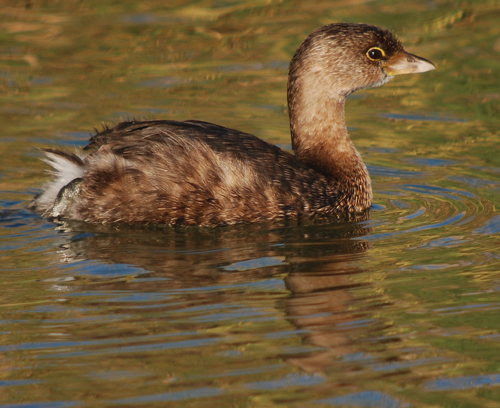
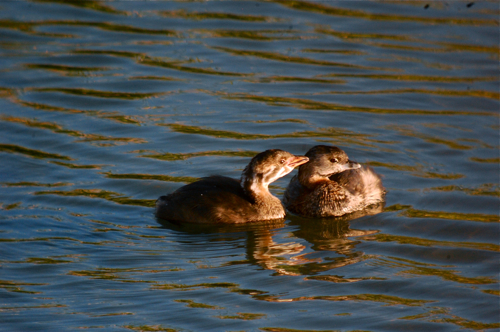
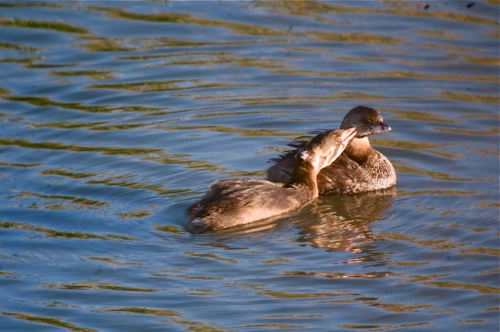
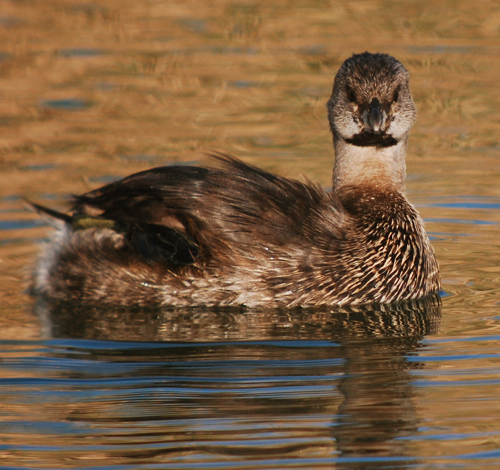


















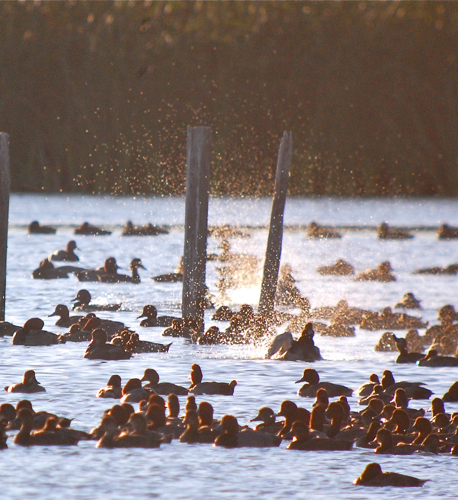 These are some redheads bathing and splashing against the sunset at
These are some redheads bathing and splashing against the sunset at 